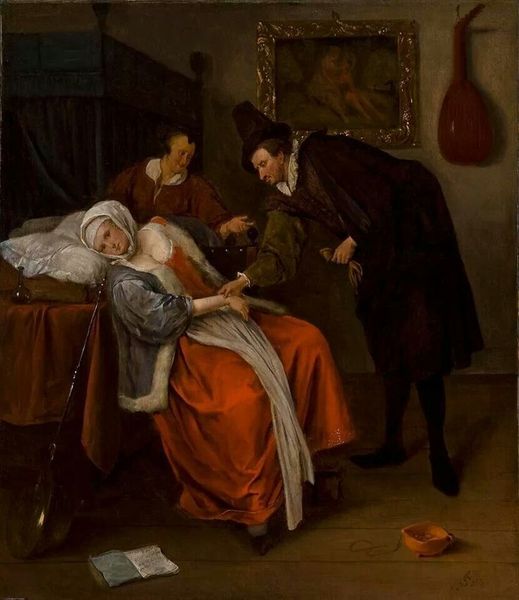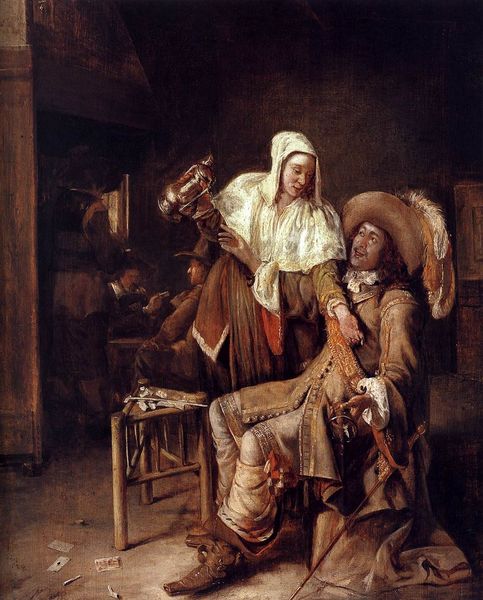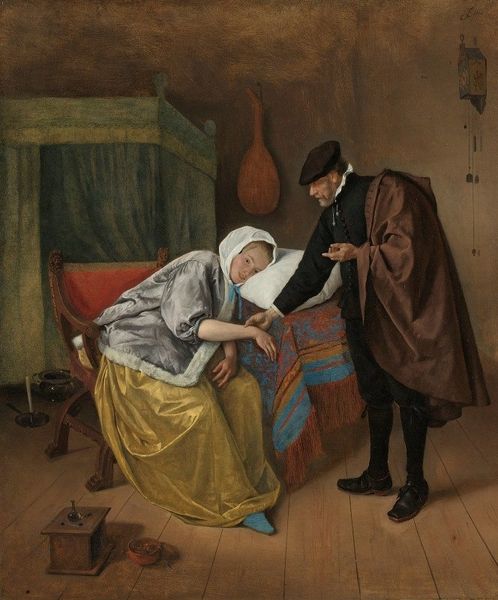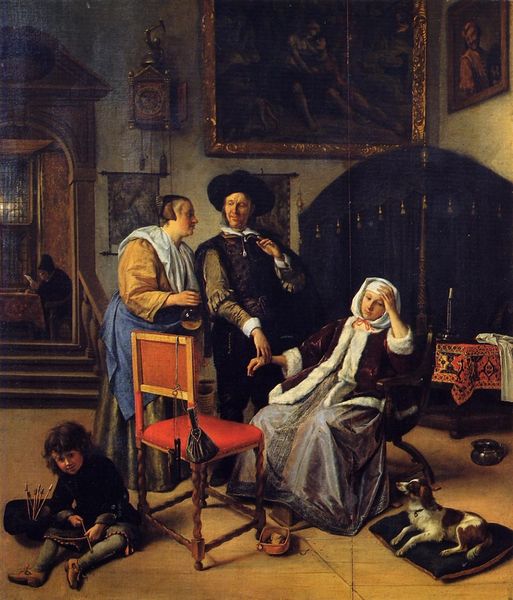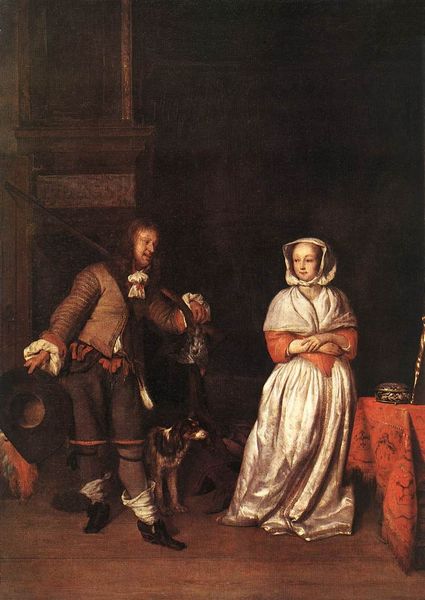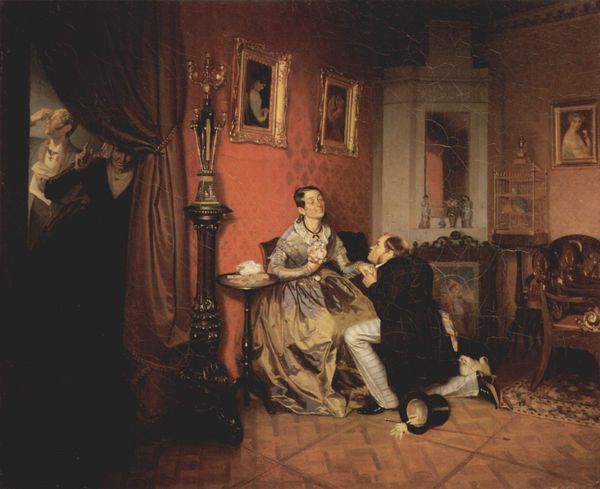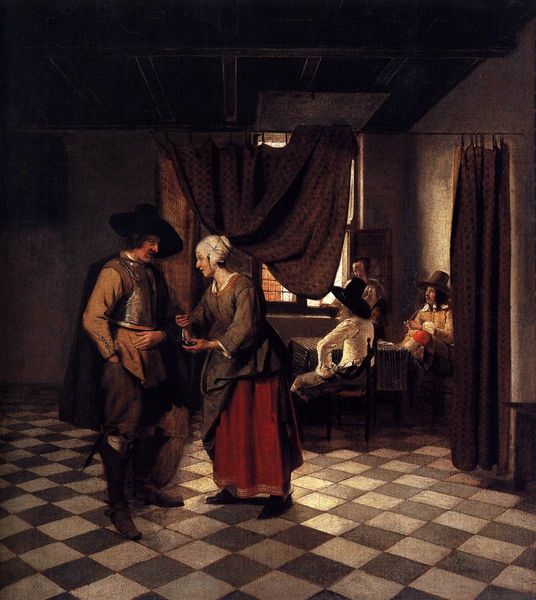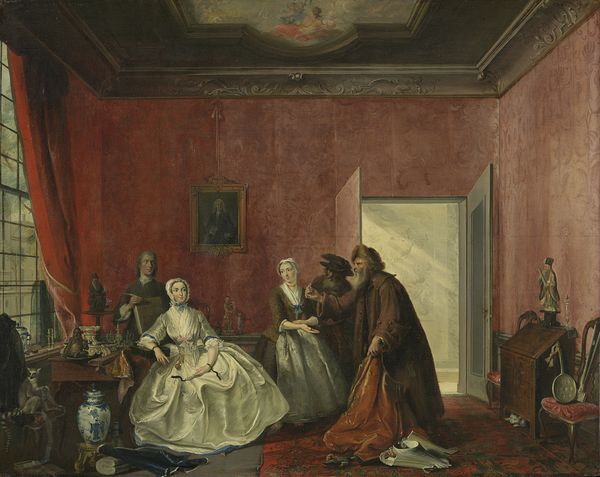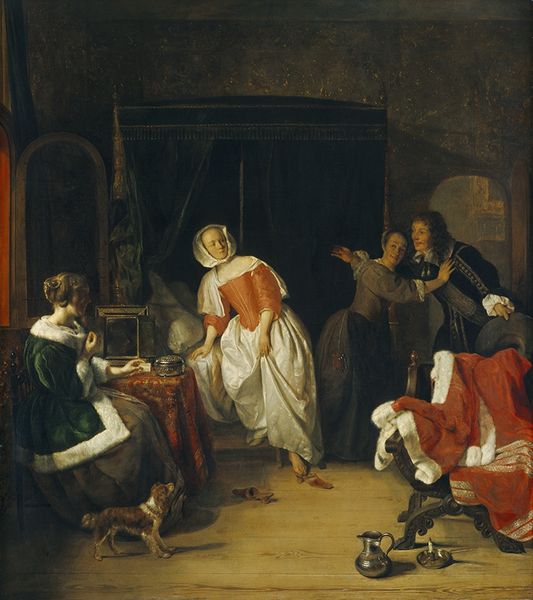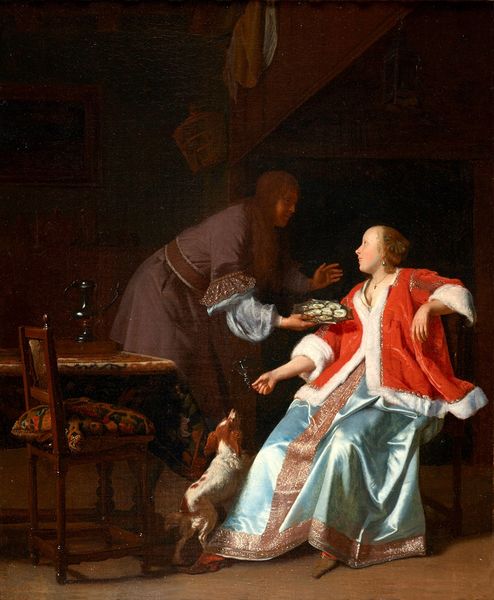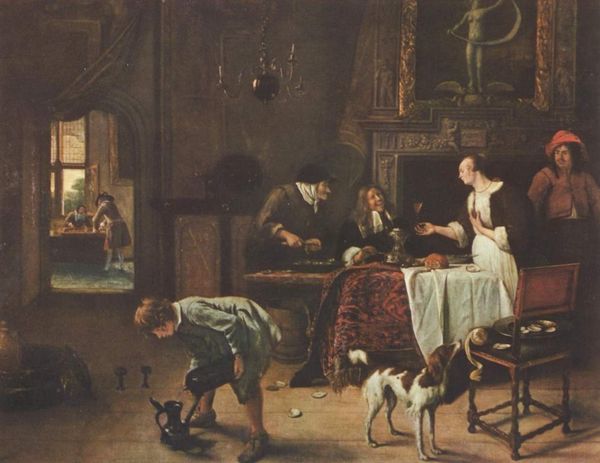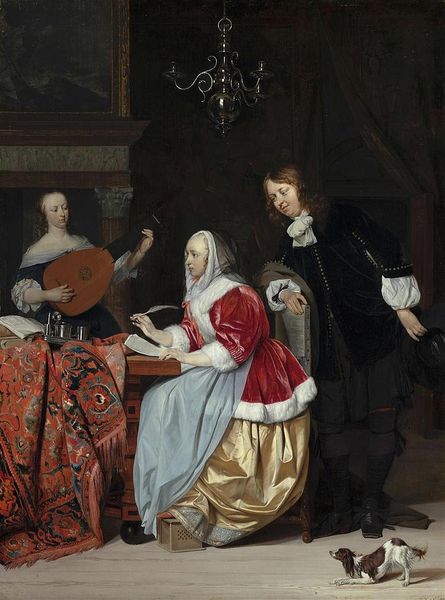
oil-paint
#
portrait
#
narrative-art
#
dutch-golden-age
#
oil-paint
#
figuration
#
oil painting
#
genre-painting
Dimensions: 52 x 61 cm
Copyright: Public domain
Curator: The languid atmosphere here is quite remarkable. Is that lethargy, or something more serious? Editor: Well, let’s dive into Jan Steen’s “Love Sickness,” created around 1660. It's an oil painting now housed in the Alte Pinakothek in Munich, and it presents a fascinating tableau. The mood to me is more playful than tragic, almost theatrical. Curator: Precisely! The exaggerated gestures contribute to that. The doctor holding her wrist, the melancholic servant in the background… each figure amplifies a feeling, a shared drama around this lovesick woman. The dog even seems concerned. Editor: Steen, of course, was known for these genre scenes, these snapshots of Dutch Golden Age life. He stages scenes that are never quite what they seem on the surface. I think we need to ask ourselves who these characters are. Who are the implied spectators in the wider Dutch Republic who were looking at pictures like this? And how did this depiction mirror back onto societal beliefs about illness, gender, and, indeed, love? Curator: Symbolism is rife. That crumpled letter discarded on the floor likely speaks to the cause of her affliction. The pot of burning coals might represent the burning passion, or perhaps just an attempt to ward off bad humors? We can speculate for a while here. Editor: True, it's ambiguous by design. But thinking about context, the economic boom of the Dutch Golden Age supported a rising middle class that wanted these everyday scenes. Steen provides that while offering commentary on their domestic lives and social dynamics. Curator: Exactly. He mirrors and exaggerates at the same time. A comedy, but one with a sting of truth. A universal feeling presented within the constraints of class and social standing. Editor: I find myself wondering whether paintings such as these gave a narrative and imagery to these ailments and concerns that previously weren’t quite as codified and public. Curator: Indeed. It allows the viewer to recognize themselves, laugh, and perhaps consider a little more closely those things we all think we know.
Comments
No comments
Be the first to comment and join the conversation on the ultimate creative platform.

